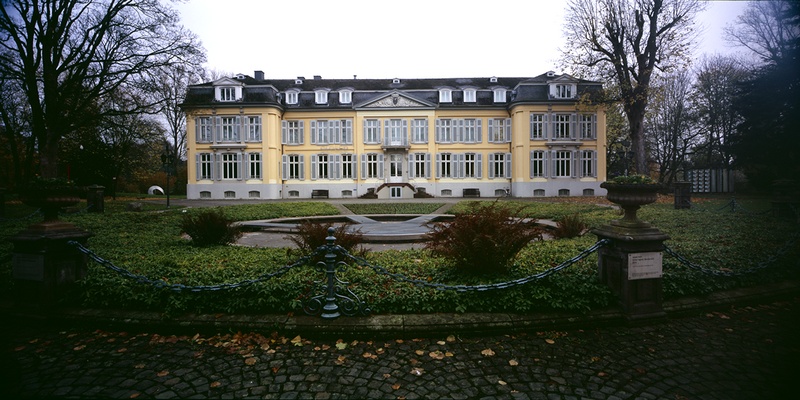Wista-Mamiya
DIY Hybrid – getting closer to the perfect wide-angle camera
(2013)
As you may have gathered
already, I am rather a wide-angle photographer…
To get on with my search for an ideal wide-angle camera, I
have
even put down my requirements and what the different camera concepts
have to offer as a table - but since it is in German it is of not much
help to the English speaking part of the world (it didn't help me much
either...)
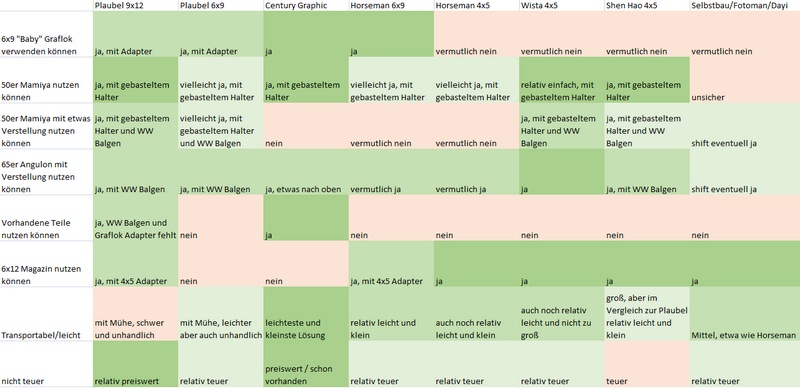
I went a long way to
come closer to the ideal, I have e.g. converted a Graflex Century
Graphic to the
Mamiya Press mount
Too flimsy and restricted to 6x9 (6x12 was always in the back of my mind)
I then tried to modify a
Shackman oscilloscope camera
Please note the nice
instruction “This part may be rotated in either
direction”
This beast offered enormous shift capabilities, but was very heavy and
a little inelegant.
I
Eventually gave myself a Wista VX 4x5 camera, with which I
spent my summer vacation:
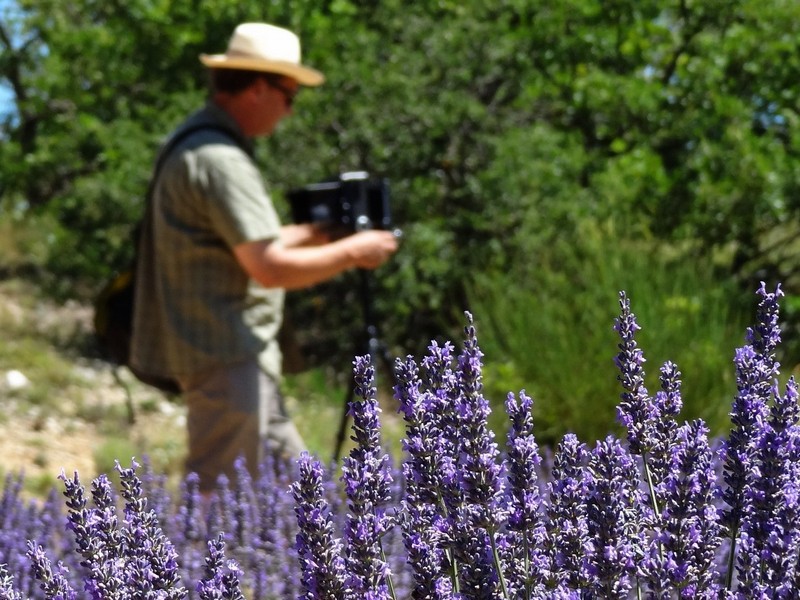
The Wista is a
4x5“ field camera, a foldable flatbed camera, which I
operated with a 6x9 (2x3”) roll
film back and a 150mm Schneider Xenar, a 65mm Schneider Super Angulon
and certainly my trusted
50mm Mamiya Press lens. To be able to see at least something on the
ground glass, even with the
wide-angle lenses, I fitted a special Fresnel screen from Ebony, which
improved the situation a little,
but not by much. A bright image “from corner to
corner” seems difficult to achieve.
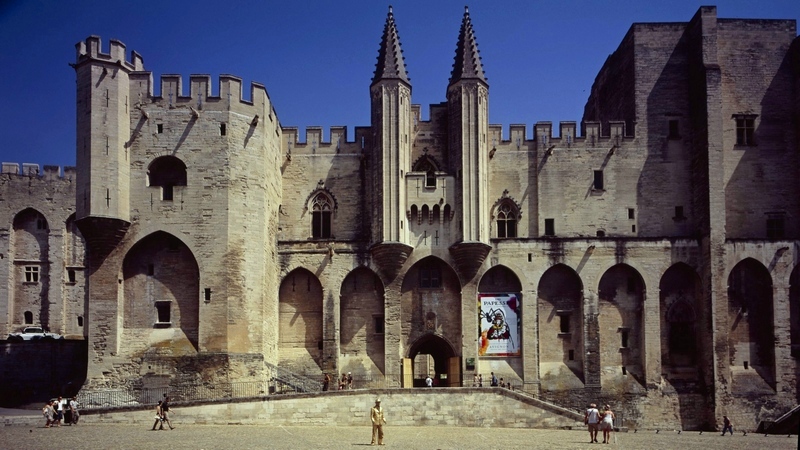
Still a very pleasant
photographic experience! Relatively easy to carry, very solid, a fine
way of taking
pictures – with the one exception that operating lenses with
a small register is tedious or even
impossible, and those tend to be the (wide-angle) lenses I
love…
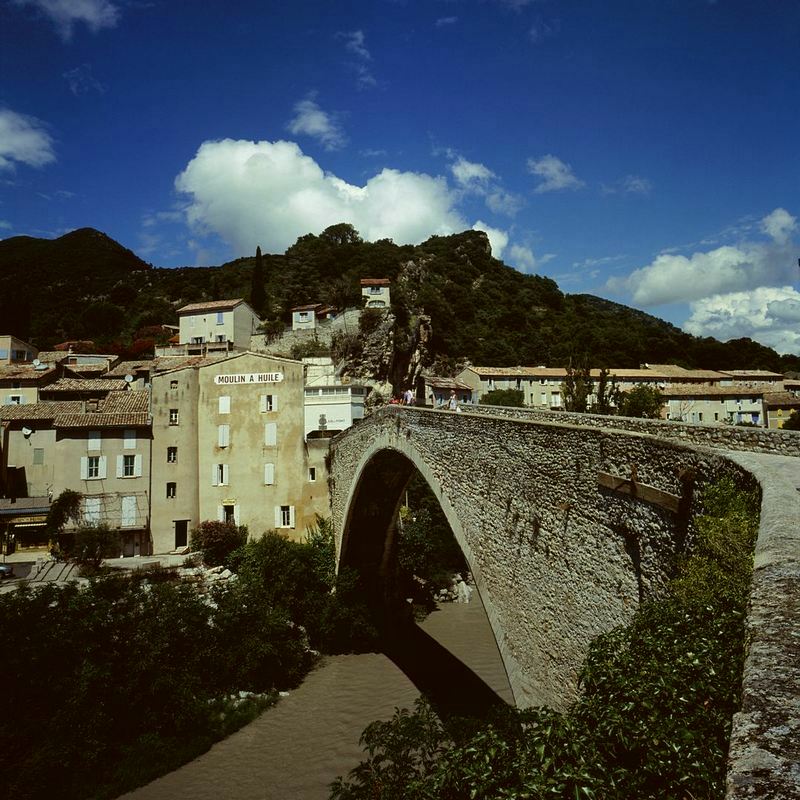
To be able to use at
least some movements on the 50mm Mamiya and on the 65mm Super Angulon,
a
wide angle bellows is needed, which is (or was) available for sale
… in theory. In practical terms, this is
an accessory very hard to get. The leather wide-angle bellows I
fabricated myself indeed allows for
those movements at very small extensions, but happens to be too bulky
to allow closing the camera
properly, unfortunately…
As likable as the Wista is, this is not perfect, again.
So, what would eventually be my ideal?
* Being able to use
international 4x5” backs, including a 6x12 back (the largest
format I
am able to scan).
* Being able to use Mamiya Press lenses
* Tilt and Shift
possible even with lenses with registers a small as that of the Mamiya
press lenses
* Reasonably priced and rugged enough to be taken outside
Since the Wista can
easily be dismantled, the use of the rotatable back was an easy choice,
as well as
that of the front lens standard, which allows generous movements.
Mamiya Press lenses can also be
mounted, in a lens board made from sheet aluminium and a Mamiya Press
close up ring.
Unfortunately, the – beautiful – Horseman cameras
cannot be used for that, because their lens board
size is too small to take the Mamiya Press bayonet.
The „In Between“ I had to make…
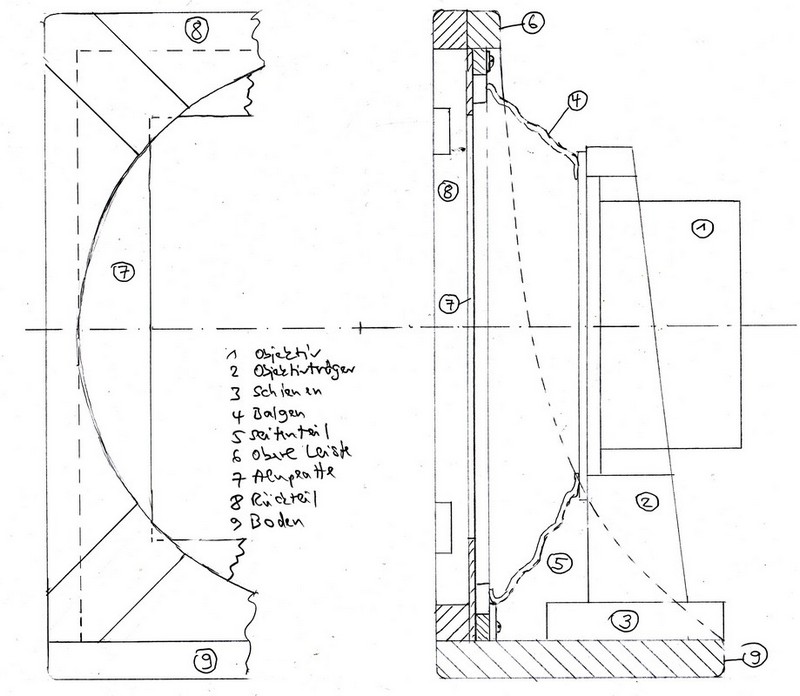
There even was a Lego brick fixture, again…
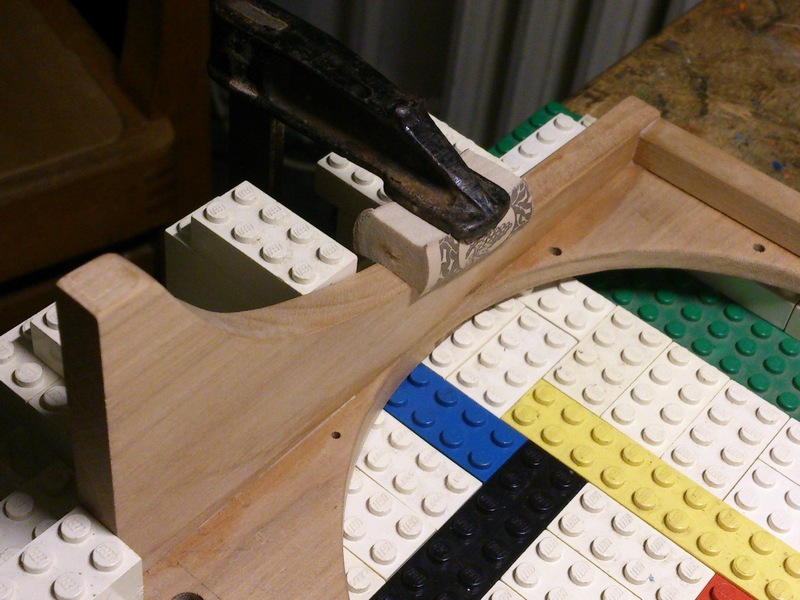
The flange for the rotatable back of the Wista is pretty ingenious, and
cannot be replicated at home (at
least not by me), so I had to look for a simpler solution. Eventually,
after numerous brainstorming
sessions, I went for a “slotted” opening, made from
3mm aluminium sheet metal.
After inserting the back, the top opening is closed with an interlock,
pushed into place. It remains
possible to turn the back, for an occasional portrait format shot, and
the back certainly doesn’t fall off.
On the other side, the
wide-angle bellows has its place, and the two angular rails (filed with
love) wait
to take on the Wista lens standard.
The lens standard does
not need to be moved very often, since the Mamiya lenses have a
focusing
helicoid. All that is needed is a mark on the rails.
I have tried to make the
wooden body as shallow as possible, to be able to access and operate
the lens
movements as good as possible. This is as narrow as I could get it, and
it indeed allows relatively easy
operation as opposed to the original Wista, where I almost broke my
fingers.
The whole
thing is is still pretty heavy, 2200g with 65mm lens and
screen, which means that with two
additional lenses and some accessories, your bag weighs over 5kg. But
at least the weight is less than
that of the Wista, one third less for the camera alone. Even the
occasional handheld shot seems
possible.
I own three Mamiya Press
lenses currently, all of them allowing sufficient movements on a 6x9
format.
The 50mm does not quite cover the 6x12 format (it vignettes a
little in the corners), the 75
has no problem at all.
On a 6x12 format, the 50
mm lens offers an enormous angle of view (equaling a 15mm lens on
24x36),
but even the 75mm lens offers the view of a 23mm
lens on 24x36 (horizontally).
Sample images:
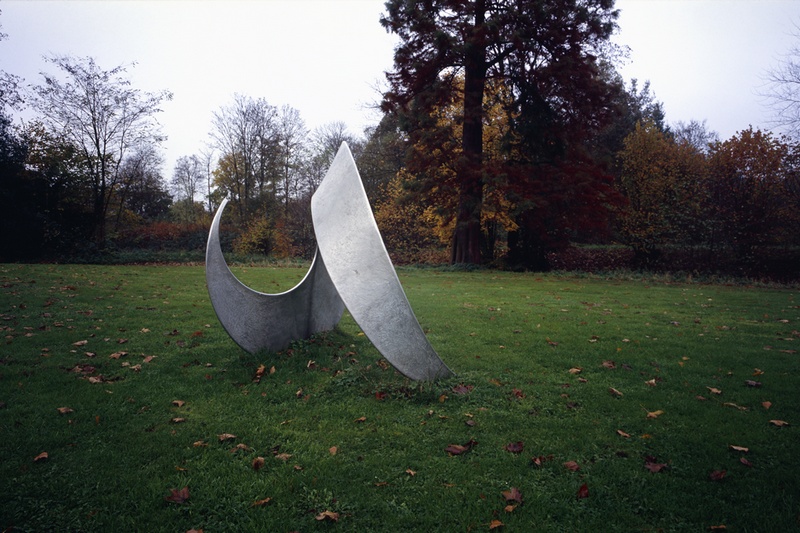
Schloss Morsbroich, Leverkusen, with the 100mm on 6x9 (shifted upwards a little too much ;-)
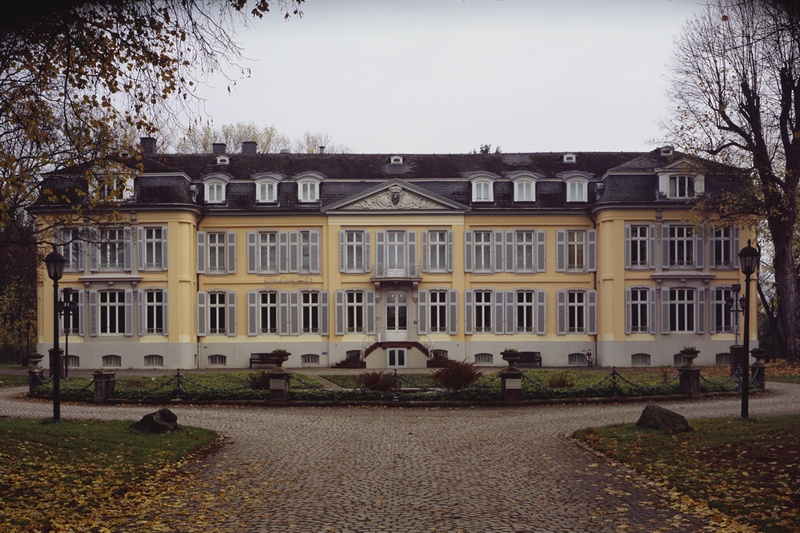
and with the 50mm on 6x12:
